Another Renaissance masterpiece in the Loire Valley, Chaumont Castle, with its pale stone and sloping slate roofs, dominates the Loire River and the village of Chaumont-sur-Loire, just a stone’s throw from the towns of Blois (17 km) and Amboise (20 km).
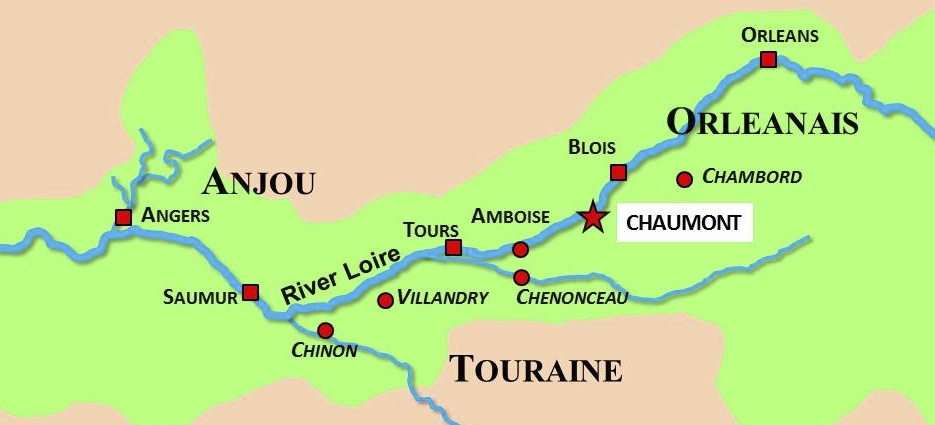
The Castle of Chaumont-sur-Loire: a bit of history
The castle of Chaumont stands on a hill overlooking the left bank of the Loire River.
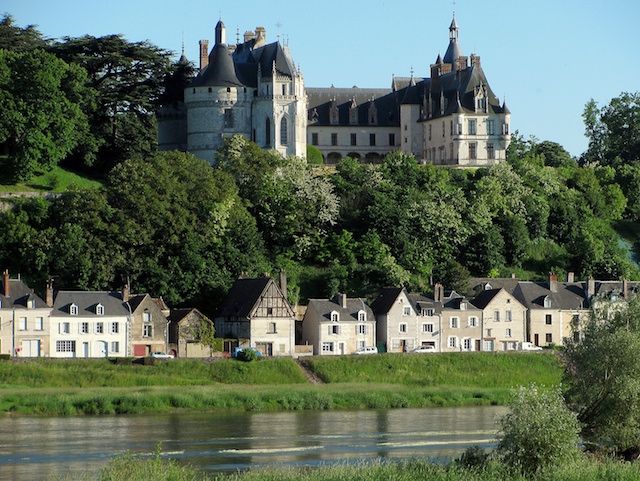
The entrance is found on the South wing, between two round crenelated towers.
From the Middle Ages to the Renaissance era
Until the 15th century, it was a medieval castle belonging to the Counts of Blois, which is revealed by the two massive round guard towers at the entrance of the building. In the 10th century, Eudes I, Count of Blois, built the castle of Chaumont on a site overlooking the Loire River (‘Calvus mons’ or ‘bald mount’) which would protect the city of Blois from the raids of Foulques Nerra, Count of Anjou.
In 1455, Louis XI ordered the dismantlement of Chaumont Castle as an act of punishment against Pierre of Amboise who led a rebellion against the King’s authority during the “Ligue du bien public” (League of Public Good). His son, Charles I of Amboise rebuilt the fortress from 1465 to 1481 (North and West wings) in a Gothic defensive style, with a wall-walk, machicolation and dry moats. Later on, the feudal shapes of Chaumont Castle were softened by conical roofs and Renaissance elements.
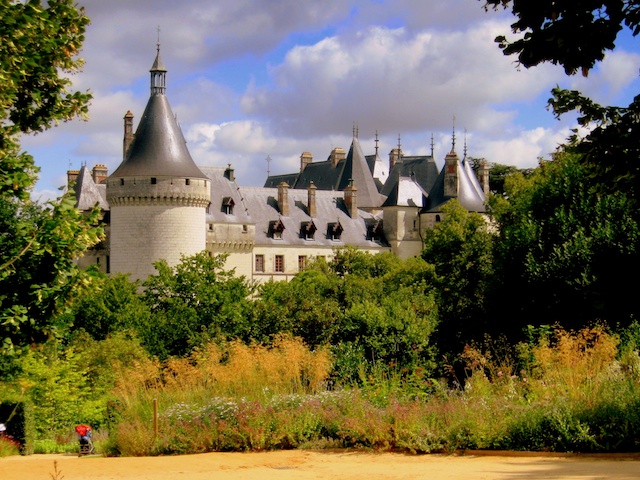
From 1498 to 1510, Charles II of Chaumont Amboise, assisted by his uncle, Cardinal Georges of Amboise, Archbishop of Rouen, continued the renovation work in a style influenced by the Renaissance, while keeping the feudal structure of the castle: South wing, gatehouse, East wing and chapel and large staircase in the courtyard that was almost square. The angles were cardinal at four points, same as Chambord. In 1501, Charles II was made governor of the Milanese by Louis XII. His appointment in Italy led Charles II to bring back to the Loire Valley the new fashionable style of Renaissance, hence the Italianate features appearing at Chaumont Castle.
During this time a frieze showing two interlaced ‘C’s representing Charles II of Chaumont Amboise and his wife Catherine of Chauvigny was engraved on the façade of the Castle’s external walls, as well as a burning mount (chaud mont).
Catherine de Medecis vs Diane de Poitiers
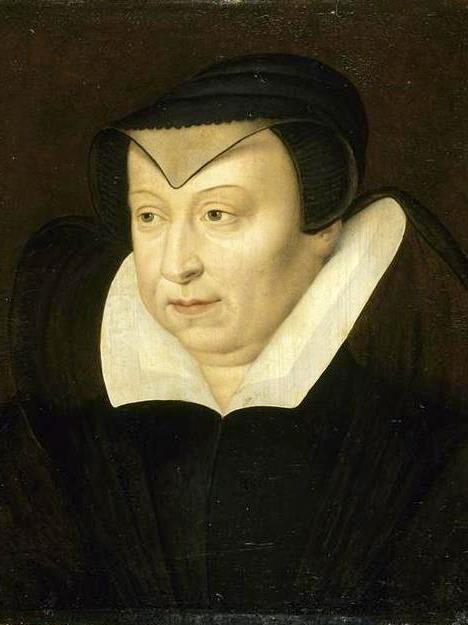
In 1550, Catherine de Medicis, Queen of France, came into possession of Chaumont Castle. There she entertained numerous astrologers, among them the sorcerer Ruggieri, her adviser on the occult arts. Legend has it that Catherine de Medicis used to retire with her adviser in a secret hideaway where they would conduct magic rites and interrogate the stars about the future.
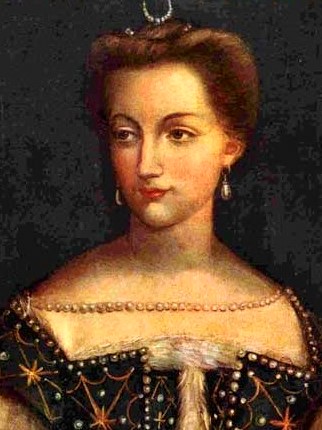
Ten years later, the estate was offered by Catherine de Medicis, then widow of King Henri II, to Diane de Poitiers, the Kings’ mistress, to take her revenge on her husband’s adultery. Her plan was to exchange it for Chenonceau Castle which the King had given Diane in 1547, the year of his coronation. Diane was forced to give Chenonceau away for Chaumont but only stay a short while in her new place, before retiring to Anet Castle for the rest of her life.
Chaumont-sur-Loire up to today
![Chaumont sur Loire Castle © Christophe.Finot - licence [CC BY-SA 1.0] from Wikimedia Commons](https://frenchmoments.eu/wp-content/uploads/2012/11/Chaumont-sur-Loire-Castle-©-Christophe.Finot-licence-CC-BY-SA-1.0-from-Wikimedia-Commons.jpg)
Chaumont Castle changed hands many times until the 18th century when the chatelain Bertin ordered the demolition of the north wing in order to have a better view of the Loire.
Remarkable stables were commissioned in 1877 to architect Paul-Ernest Sanson. The same architect was asked by Prince Henri Amédée de Broglie to work on a comprehensive restoration of the castle. The stables were amongst the first in Europe to be equipped with electric arc lighting, at the same time as the Opera Garnier and the Paris Town Hall. They reflected the conditions of wealthy aristocracy at the end of the 19th century.
For 40 years, Chaumont Castle saw extravagant parties and celebrations. Unfortunately, the Princess of Broglie was forced to sell the castle in 1938 to the State due to her financial problems. Since 2007, the entire estate of Chaumont-sur-Loire has been transferred to the administrative region of Centre and covers 21 hectares comprising the castle, the stables, the ornamental garden, a vast woodland and meadows.
Chaumont Castle is currently a museum and hosts a Garden Festival from April to October where contemporary garden designers display their work in an English-style garden.
Inside the Castle of Chaumont-sur-Loire
Many rooms, stairways and interior features of Chaumont Castle were remodeled or added in the Renaissance style in the 19th century.
The Ground Floor
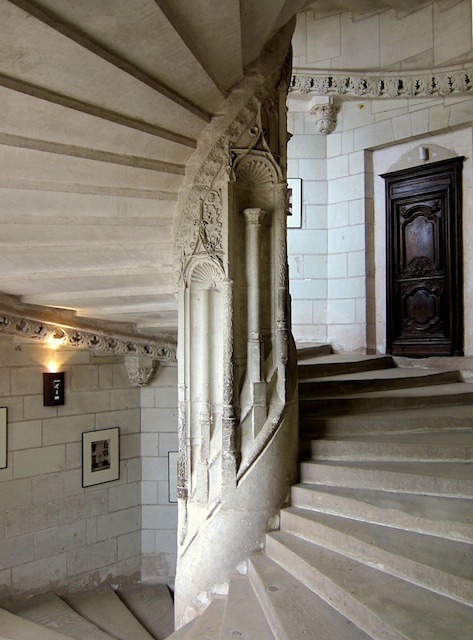
The visit of Chaumont’s interiors lead the visitors through the Guard Room, the necessary passageway to the Royal Chamber. It was also used as a training area for the guards and provided a place from which to watch the exterior of the castle and still keep an eye on the interior courtyard.
The bedroom of Diane de Poitiers is named in reference to King Henri II’s mistress and was furnished by the Prince de Broglie at the end of the 19th century. It contains various art objects related to Diane de Poitiers.
The Council Chamber exhibits majolica tiling from the 17th century, bought by the de Broglie family.
The bedroom of Catherine de Medicis was named so by Prince de Broglie, but it was an apartment in its own right in the 15th and 16th centuries.
The bedroom of Ruggieri, has been called so after Catherine de Medicis’ appointed astrologer, and is referred to as such because of the sign on the mantelpiece, considered to be a cabalistic sign.
The beautiful main spiral staircase shows the gradual influence of the Renaissance style from Italy over Gothic style around 1500.
The First Floor
The first floor in the South wing was used at the time by the de Broglie children. It displays the work of Jannis Kounellis, a key figure of “Arte Povera” and world famous plastic artist.
The dining room was reconverted by the de Broglies in the style of the 15th and 16th centuries.
The library was originally used as a dining room. It was reinstated as a library by Count Aragon and redecorated by the Prince of Broglie. A fire in 1957 destroyed the Prince’s decorations.
The billiards room was used for this game but also as a smoking room for the men to meet and smoke a cigar after a large meal or talk politics.
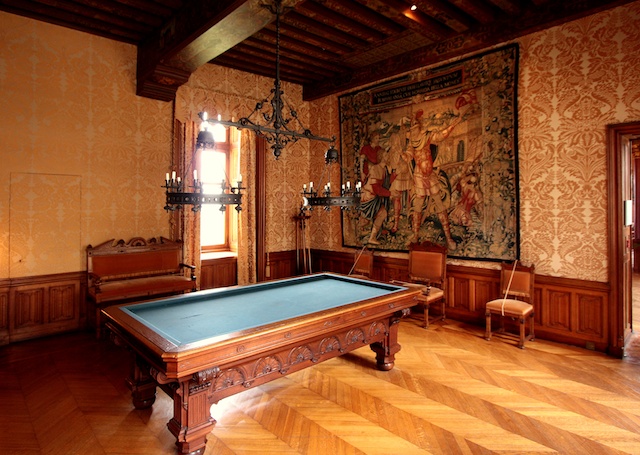
The great hall is decorated in a Louis XII style by Viscount Walsh around 1850.
The flamboyant chapel dates back to the start of the 16th century and was restored in 1884-1886. The stained glass windows tells the history of Chaumont, from its origin to the time of the de Broglie family.
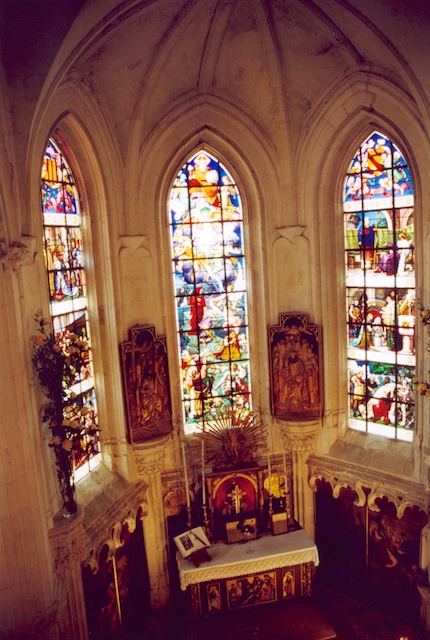
How to get to Chaumont
Chaumont is 190 km away from Paris and is easily accessible by car by the A10 motorway.
If you are travelling from Australia or America, fly to Paris Charles de Gaulle, and rent a car from there or connect with a train at Gare d’Austerlitz.
Trains from Paris-Gare d’Austerlitz run to Blois, from where you can take a regional train to Chaumont, 17 km away.
For more information about your visit to Chaumont Castle: http://www.domaine-chaumont.fr
Featured image: Chaumont sur Loire Castle © Christophe.Finot – licence [CC BY-SA 1.0] from Wikimedia Commons



